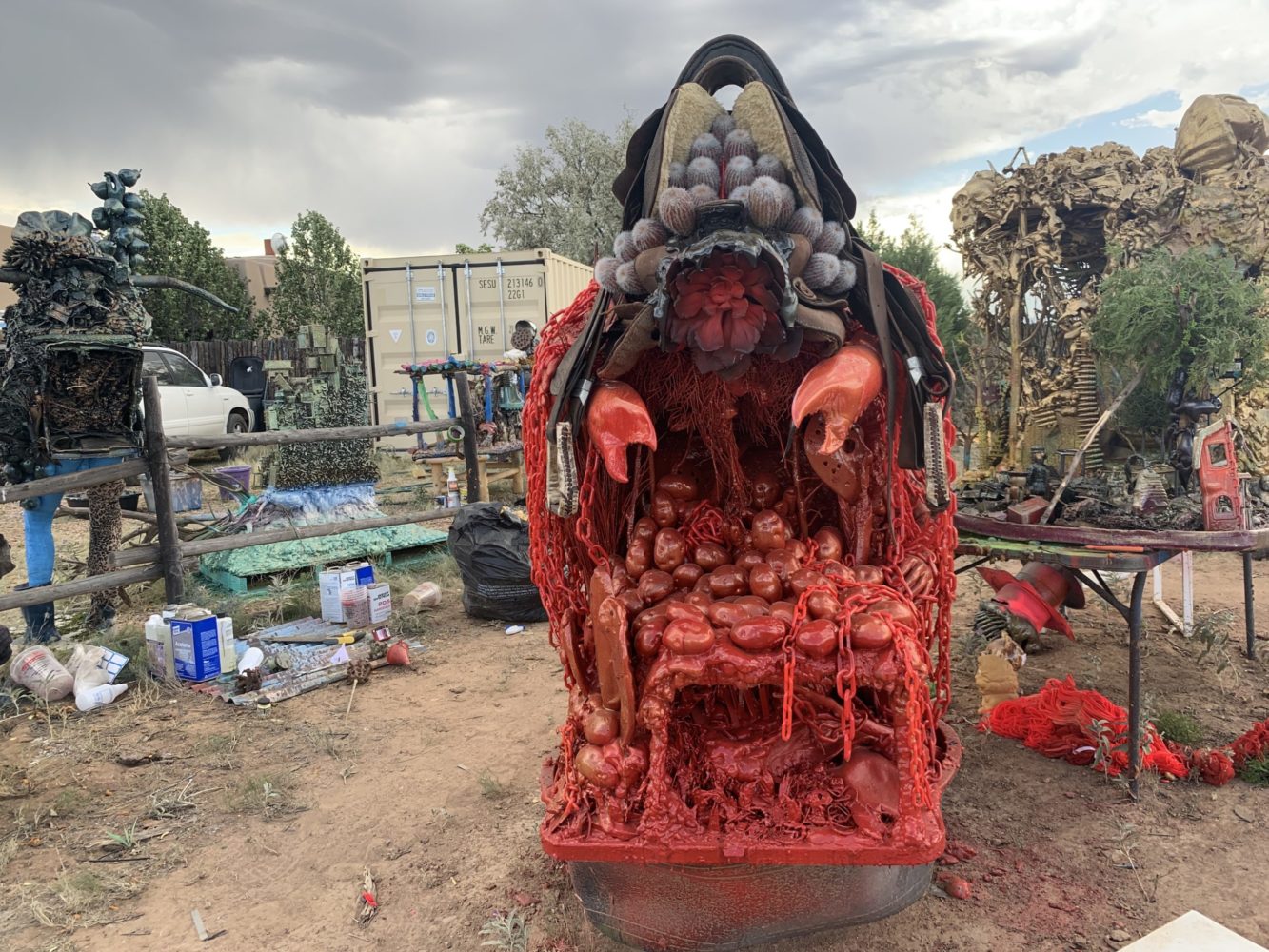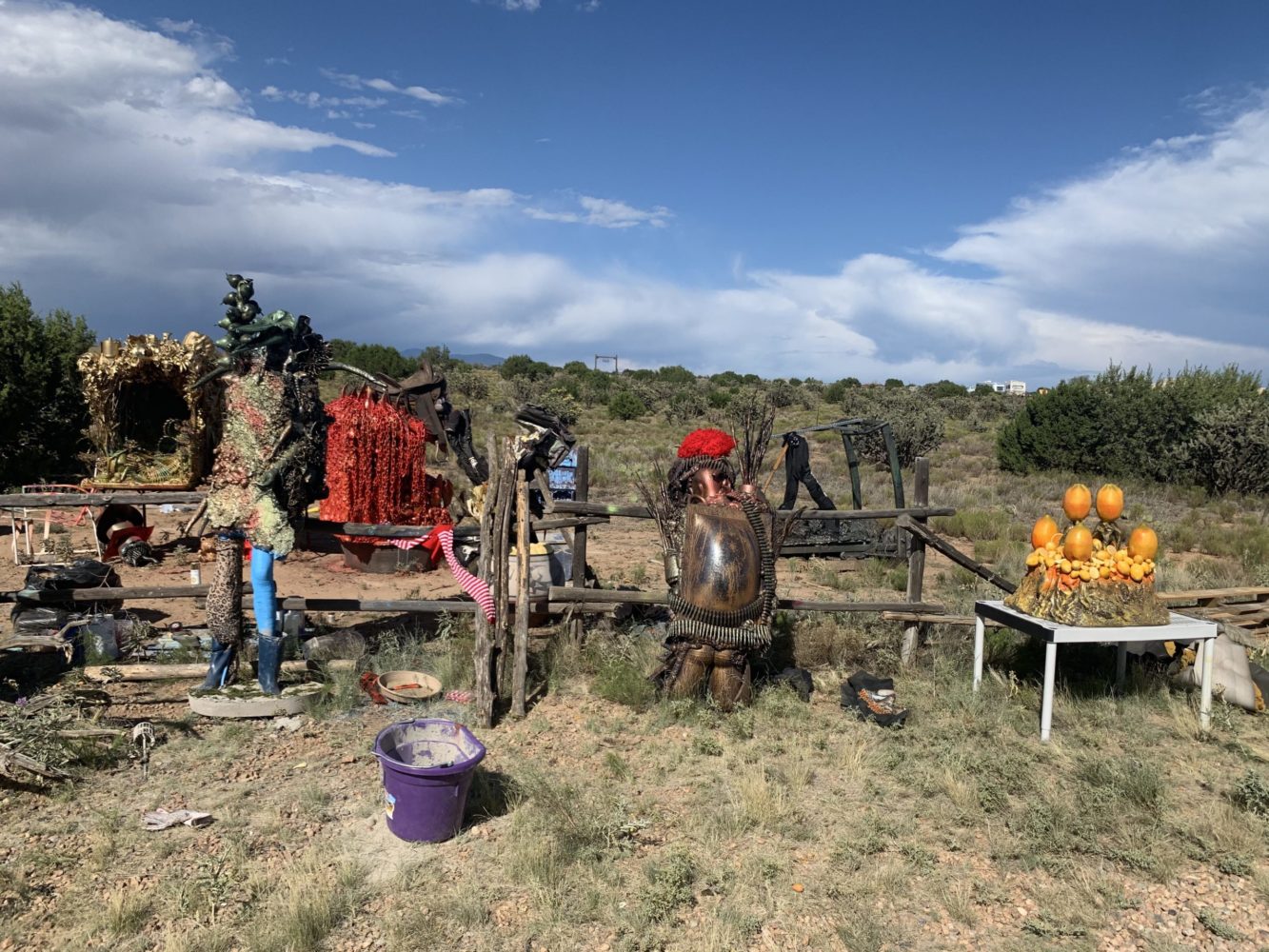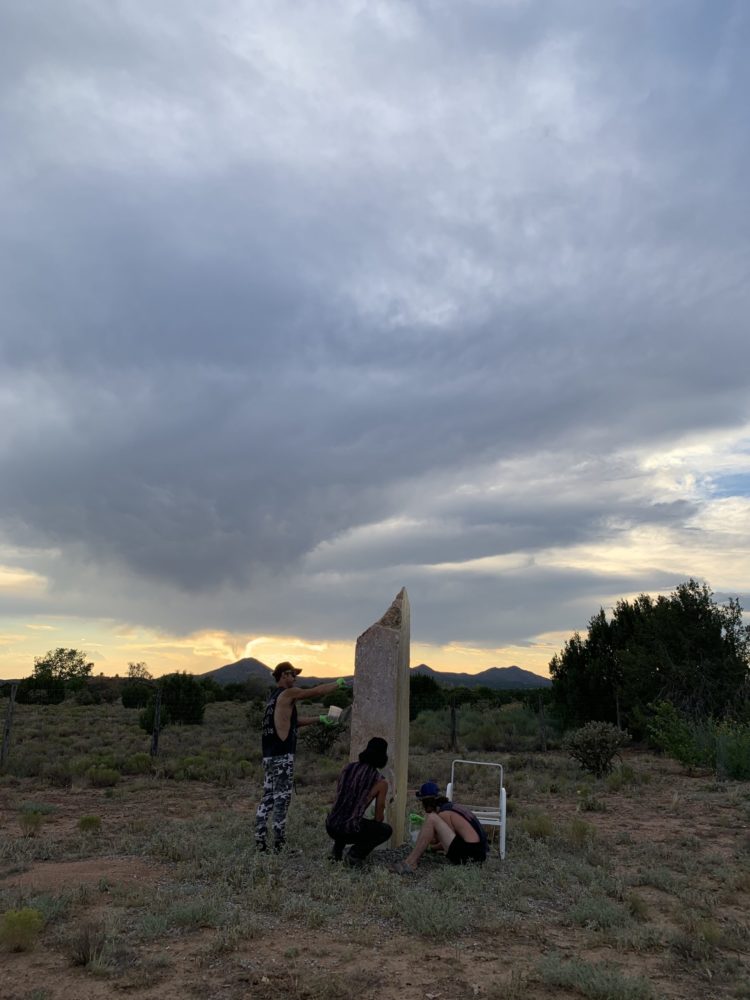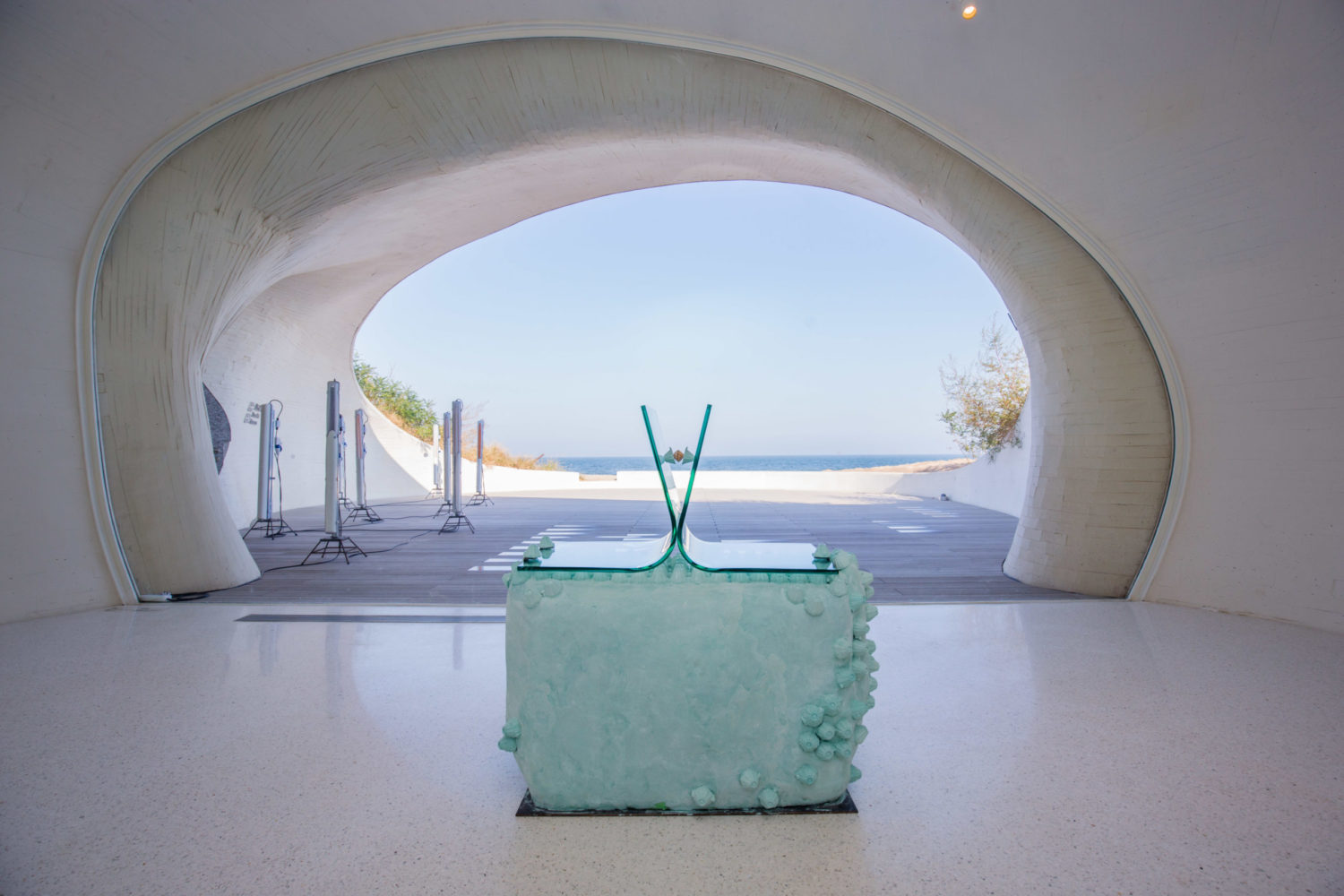The Los Angeles-based artist Max Hooper Schneider is known for his experiential environments and habitats created inside vitrines—a concept where the artist explores the intermingling between the natural and artificial. While his background includes a bachelor’s degree in biology and a master’s in Landscape Architecture from Harvard, Hooper Schneider has been using his expansive interests to inform his artistic practice since childhood.
In 2016, Hooper Schneider was chosen by a jury as the next recipient of BMW’s Art Journey— an initiative that takes artists on in-depth explorations of their proposed topics. And in 2017, the artist embarked on his journey, which took the form of a worldwide investigation of coral development.
For the project, the artist placed empty vitrines in reef systems which have previously been tampered with by humans, like the Bikini Atoll and the Fukushima disaster reef. After documenting their progress for an extended period of time, the vitrines will—eventually—be removed for observation on the complexity of manmade systems.
To learn more about his practice, the BMW Art Journey, and his studio in New Mexico, Whitewall spoke to the artist.

The New Mexico high desert landscape that lends itself to a specific type of experimentation and artistic spontaneity; courtesy of Max Hooper Schneider.
WHITEWALL You were selected to begin the BMW Art Journey in 2017. Can you tell us about your experience?
MAX HOOPER SCHNEIDER: Full disclosure, I am still in the experience. I was exposed to so much that one could devote many decades of their life attempting to articulate and precisely map these countless encounters and lost worlds. Do I dare say the experience yielded toxic levels of beauty? This all goes to say that it reawakened my appetite for the world in many ways.
My pneumonic device/organizational tool for processing the experience has been editing the thousands of hours of footage culled from scuba diving and the many pilgrimages to remote islands and atolls. When the time is right this will be debuted as a short film. Think nature documentary meets macabre pastiche.
WW: Your practice regularly includes works constructed inside glass vitrines. How did this evolve into your idea for the trans-habitat vitrines you executed for the BMW Art Journey?
MHS: I’ve been working with dioramas inside vitrines—via the aquarium trade and my own impulses—since boyhood.
I have perennially argued that the aquarium or vitrine functions as an opening rather than an enclosure. Principally, it opens up a critique on human centrality and positivism; it is a tool for problematizing the meanings assigned by humankind not celebrating. Without any stretch of the imagination, we can see that during the journey (and in perpetuity until they are disinterred from their underwater burial sites in the Indian Ocean) the vitrines are left open to nonhuman destruction and colonization.
I authored a parameter, i.e. the architecture of the clear surfaces of the acrylic, and invertebrates, microfauna, polyps, algae, etc. will render this parameter to their needs and erase/override my doing. This is an exemplary model of my concept of the “trans-habitat”: a habitat in flux, constantly shapeshifting and mutating with no terminal state. Matter itself is always in motion and persists whether the forms it takes are classifiable to us or not.
WW: With a background in biology and landscape architecture, what lead you to making art in the first place?
MHS: For most of my 20s, I had the privilege of freely studying what I wanted to. Although I innately understood myself as an artist, I never had to make austere preprofessional decisions associated with fields such as biology or landscape architecture. I just set my own pace and amassed skill sets based on undying interests.
Although I was actively studying art and art history, I chose to do my master’s degree in landscape architecture at Harvard because I thought it would be the perfect environment for engaging material technologies, vastly different scales of building and biological systems.
WW: The mood of your work is eerily relevant to what’s happening right now in the world. Have you been able to find any inspiration in these past few months?
MHS: My work has always focused on mutation, adaption, destabilizing humankind as the chief architect of the world out there. The pandemic epoch is deeply distressing and has highlighted once again the human body as a holobiontic system—the host and everything living in and around it. I wouldn’t say I’ve drawn inspiration from this milieu but perhaps certain calls to action.
WW: Can you tell us about your studio in New Mexico? How does the location impact your practice?
MHS: It is less about the location than the security that is brought about by mother and her dogs. As a unit we work very well together. We exchange ideas, cook, drink, collect materials, compose dioramas around the house that often serve as prototypes for future works.
The erratic weather, high heat, snowy months and dryness of the elevation all help to denature and in/form the materials I employ in my work. It allows my constructions and assemblages to be corrupted by the elements and opens them up to further investigation. It adds the right note of instability to the work. If a central tenet of my practice is succession, then this is an optimal testing ground. In a matter of months one can watch a plastic soda bottle turn into a brittle nest of straw-like filaments.

Max Hooper Schneider’s “roadside altar” in progress natural and artifactual elements. The altar will house a luminous entity. In an exhibition setting it should feel less like an object and more like an event; photo courtesy of the artist.
WW: What are you working on at the moment, can you tell us about upcoming projects for you?
MHS: I am working with fossils from the Eocene period and have developed a series of “machinic parasites” (kinetic aluminum beings) that will emerge from skulls and errant bone piles. It is a hardcore mash up of elements, a recombination reminiscent of film editing, that probably creates more wonderment than certainty about a past or present. These works will appear this season in Berlin and Paris.
In Spring of this year, I will embark on the research vessel the R/V Falkor with a team of scientists (operated by the Schmidt Ocean Institute) as part of an expedition to the Phoenix Islands in the Central Pacific Ocean that tracks corallivory (i.e. things that eat coral) and coral defenses against these predations. This will surely hearken back to the Art Journey of 2017 as I will be filming the findings underwater.







